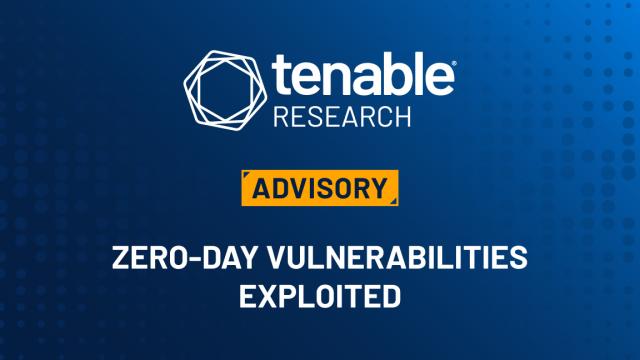- My cat loves this automatic wet food feeder, and it's on sale
- Certified and Unstoppable: Recertify with Rev Up
- Walmart's drone delivery spreads its wings to 100 more stores - is yours one?
- Meta Ray-Bans for 20% off is a great deal on one of my favorite products
- Control content chaos without compromising security
CVE-2023-6548, CVE-2023-6549: Zero-Day Vulnerabilities Exploited in Citrix NetScaler ADC and NetScaler Gateway

Two zero-day vulnerabilities in Citrix NetScaler ADC and NetScaler Gateway have been exploited in the wild. Urgent patching is required to address these flaws.
Background
On January 16, Citrix published an advisory for two new zero-day vulnerabilities in its NetScaler Application Delivery Controller (ADC) and NetScaler Gateway appliances:
| CVE | Description | Severity |
|---|---|---|
| CVE-2023-6548 | Citrix NetScaler ADC and Gateway Authenticated Remote Code Execution (RCE) Vulnerability | Medium |
| CVE-2023-6549 | Citrix NetScaler ADC and Gateway Denial of Service Vulnerability | High |
According to Citrix, these flaws have been exploited in the wild, though no details about in-the-wild exploitation were shared at the time this blog post was published.
Analysis
CVE-2023-6548 is a RCE vulnerability in the NetScaler ADC and Gateway appliances. An authenticated attacker with low level privileges could exploit this vulnerability if they are able to access NetScaler IP (NSIP), Subnet IP (SNIP), or cluster management IP (CLIP) with access to the appliance’s management interface.
CVE-2023-6549 is a denial of service (DoS) vulnerability in the NetScaler ADC and Gateway appliances. An attacker could exploit this vulnerability when a vulnerable appliance has been configured as a Gateway (e.g. VPN, ICA Proxy, CVPN, RDP Proxy) or as a AAA virtual server.
Second and third zero-days in Citrix appliances in the last four months
CVE-2023-6548 and CVE-2023-6549 are the second and third zero-day vulnerabilities in Citrix NetScaler appliances that have been disclosed in the last four months. In October, Citrix patched CVE-2023-4966, a critical flaw in NetScaler appliances called “CitrixBleed” that was widely exploited by a variety of attackers.
The impact from these two new zero-day vulnerabilities is not expected to be as significant as CitrixBleed. Nonetheless, organizations that do use these appliances in their networks should apply the available patches as soon as possible.
Proof of concept
At the time this blog post was published, no public proof-of-concept (PoC) had been identified for either of these vulnerabilities. However, given the historical exploitation of Citrix Netscaler ADC and Gateway and the reported usage of these flaws as zero-days, we anticipate that exploit code may become available soon.
Solution
Citrix has released patches for these vulnerabilities as outlined in the table below:
| Affected Product | Affected Version | Fixed Version |
|---|---|---|
| NetScaler ADC and NetScaler Gateway | 13.0 before 13.0-92.21 | 13.0-92.21 and later releases of 13.0 |
| NetScaler ADC and NetScaler Gateway | 13.1 before 13.1-51.15 | 13.1-51.15 and later releases of 13.1 |
| NetScaler ADC and NetScaler Gateway | 14.1 before 14.1-12.35 | 14.1-12.35 and later releases |
| NetScaler ADC | 12.1-NDcPP before 12.1-55.302 | 12.1-55.302 and later releases of 12.1-NDcPP |
| NetScaler ADC | 12.1-FIPS before 12.1-55.302 | 12.1-55.302 and later releases of 12.1-FIPS |
| NetScaler ADC | 13.1-FIPS before 13.1-37.176 | 13.1-37.176 and later releases of 13.1-FIPS |
Note: NetScaler ADC and NetScaler Gateway version 12.1 is now End Of Life (EOL). Customers are recommended to upgrade their appliances to a supported version that addresses these vulnerabilities.
Additionally, Citrix “strongly recommends” that organization’s separate network traffic to the appliance’s management interface either physically or logically and to not expose the management interface to the internet.
Identifying affected systems
A list of Tenable plugins for these vulnerabilities can be found on the individual CVE pages for CVE-2023-6548 and CVE-2024-6549 as they’re released. These links will display all available plugins for these vulnerabilities, including upcoming plugins in our Plugins Pipeline.
Get more information
Join Tenable’s Security Response Team on the Tenable Community.
Learn more about Tenable One, the Exposure Management Platform for the modern attack surface.

